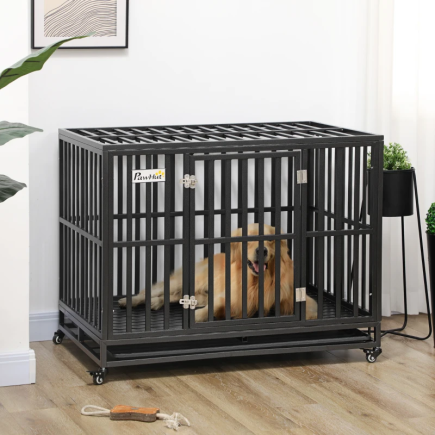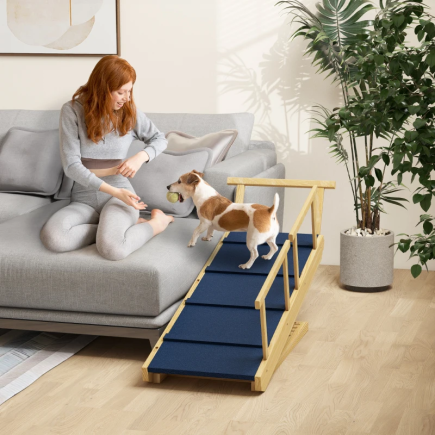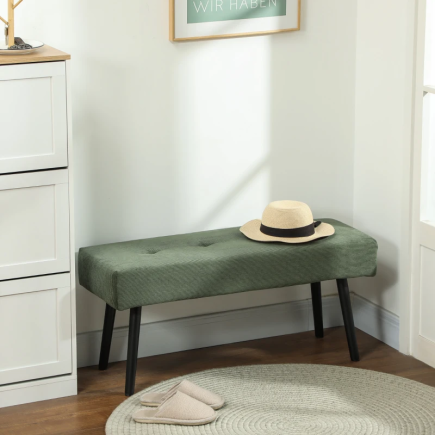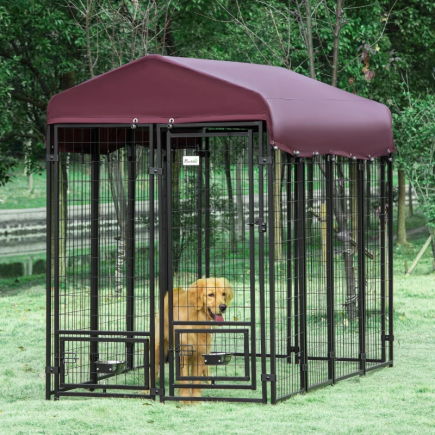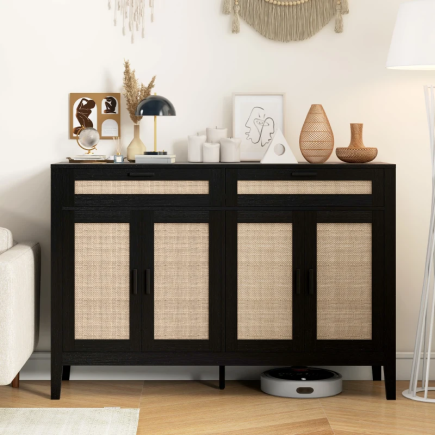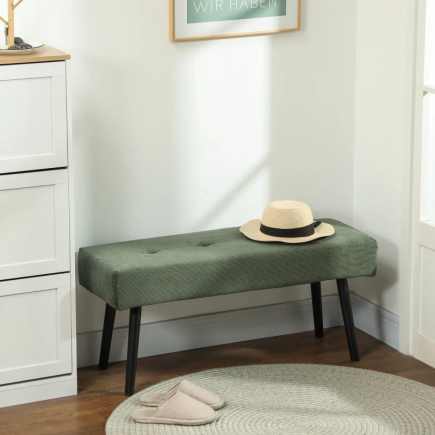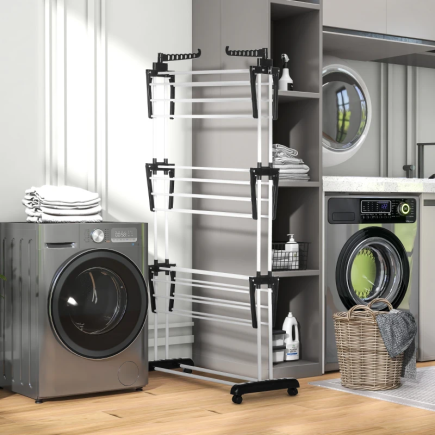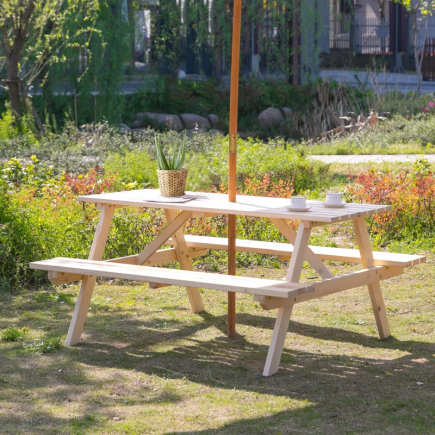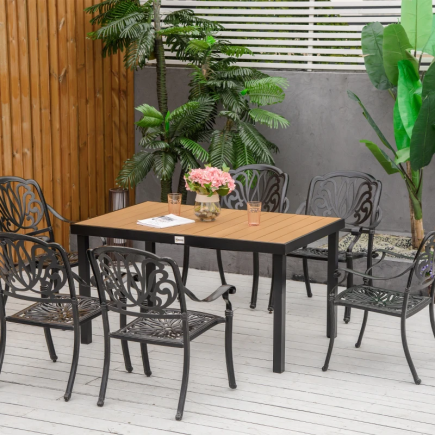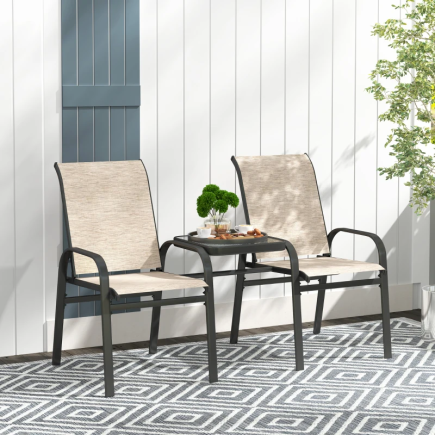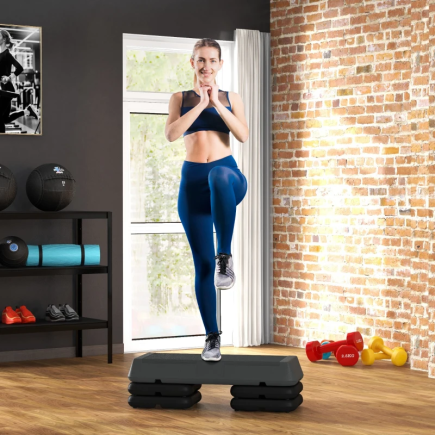
A well-styled side table can elevate your living space in ways both subtle and striking, blending practicality and personality without any clutter. This guide is a step-by-step toolkit packed with practical tips and smart solutions, allowing you to style your side table with confidence and creativity perfect for anyone looking to maximize both look and function in their living room.
1. Define Your Table’s Purpose
Start with the essentials: decide the main function of your side table before adding anything else. Think clearly about how you’ll use the table day to dayis it a drop-spot for keys and remotes, a perch for your favorite lamp, a mini-library of current reads, or a place to display decorative pieces? This decision forms the backbone of your choices.
Tip:
Begin with one main item suited to your purpose: a lamp for evening reading, a decorative bowl for keys, or a tall vase for visual punch. This “anchor” element gives intentionality to the rest of your setup and keeps clutter at bay.
| Purpose | Recommended Items | Example |
| Decorative | Art, vases, plants | Tall ceramic vase with greenery |
| Functional | Lamp, coasters, storage tray | Small reading lamp, simple tray |
| Decorative+Use | Candle, books, framed photos | Candle set atop book stack |
2. Pick a Statement Piece

Every inviting side table arrangement has a visual anchor of the object you want to highlight, whether for function or style. This is your chance to add character.
Tip: Choose a piece that complements your living room’s palette, but feel free to mix in a contrasting color or material for a bit of drama. Position a tall vase or bold lamp at the back or focal spot, or make a piece of sculptural decor your visual centerpiece.
A statement object will draw the eye and offer a starting point around which other items fall into place.
3. Layer Heights and Mix Textures

For a visually dynamic table, vary both the heights and textures of your objects. This method avoids a monotonous look and adds depth, making the arrangement feel curated.
Layering Technique:
- Place the tallest object (e.g., lamp or large vase) at the back or corner.
- Next, include mid-size items like a potted plant, a candle, or a framed photo.
- Closest to the edge, stack books or use a decorative tray or bowl.
Tip: Mix no more than two or three main finishes, think wood and glass, ceramic and metallic, or wicker and stone. This builds harmony without sacrificing interest.
Example grouping:
- Tall: Branches or tall vase
- Mid: Candle, plant, or frame
- Short: Stack of books, dish, or small container
Don’t forget, objects can be arranged diagonally for a sense of movement.
4. Organize with Trays, Bowls, and Containers

Organization is key for keeping a table neat especially when you want to combine daily use with decorative elements.
Group small items together for visual appeal and easy access. A shallow tray, ceramic dish, or small basket corrals essentials while tying your vignette together.
Tip: Pick containers that coolly contrast your tabletop try a woven tray on glass or a light tray on a dark wood table. Use them to store coasters, remotes, or matches.
Trays and bowls can also double as decorative elements, with options ranging from sleek marble and reflective metal to natural rattan.
5. Bring in Greenery & Florals

Adding plants or flowers introduces life, freshness, and even sound dampening to your living room. Even a single sprig of greenery can transform a tabletop.
You can opt for:
- Small potted succulents or ferns for a subtle green touch
- Tall, architectural branches in a slim vase for elegance
- Trailing plants that add relaxed, organic movement
- Faux or dried stems (like pampas grass or eucalyptus) for low or no-maintenance greenery
Tip: Dried foliagen such as wheat, bunny tails, or preserved eucalyptus adds lasting style and needs no care. In darker room corners, lighten things up with white or pastel pots.
Consider switching out greenery seasonally for an ever-evolving look; spring flowers, autumn branches, or winter evergreens keep things visually interesting.
6. Reserve Space for Daily Essentials

Your table’s beauty shouldn’t come at the cost of basic usefulness. Leave enough empty surface for everyday actions resting a mug, dropping off your phone, or flipping through your evening book.
Space-Saving Suggestions:
- Use compact, cordless lamps to save space.
- Opt for tables with built-in shelves or drawers to store larger or less-used items.
- Keep a couple of stylish coasters and stash the rest.
Tip: Arrange your table so open space faces your seat, pushing decor to the corners or sides. This makes the table look styled yet always available for use.
If your table’s top is small, consider wall-mounted lighting or hanging planters to free up space.
7. Master Colour Coordination

Your side table should feel like a natural extension of the room, not an afterthought or clash. A careful approach to color cements this cohesion.
Colour Strategies:
- Use neutrals (white, cream, gray, taupe) for a calm, timeless vibe.
- Pick up a color already in your furniture, artwork, or rug and repeat it in your table’s decor through a vase, candle, or decorative box.
- Experiment with metallic, mirrored, or glass objects they play with light, making the space feel bigger and brighter.
Tip: Combine two or three items in similar hues but with different finishes for depth (think matte book, shiny vase, and woven coaster in the same color family).
Don’t be afraid of subtle accent colors; something as simple as a bold book spine or a colored glass bowl can create a focal point.
8. Personalize with Accessories

A side table is the perfect place to sneak in your story photos, a well-loved book, or a unique artisan piece add layers of meaning.
Ideas:
- Stack books you’re actually reading or want to display top with a personal trinket.
- Swap in travel finds like a mini-sculpture or ceramic bowl.
- Slide a framed photo or postcard behind your main items, letting it peek out naturally.
- For a fresh look, rotate these personal artifacts with the seasons.
Tip: Choose accessories that make you happy to look at each day; your space should reflect your personality, not just a showroom.
9. Style Multi-Tier or Shelf Side Tables

Many side tables come with extra levels or built-in shelves, maximizing display and storage:
- Top tier: daily must-haves (lamp, book, beverage)
- Middle/lower tier: decorative boxes, baskets, planters, magazine stacks, or less-used essentials
Tip: Use baskets or fabric bins for storing bigger items, toss in throws or tech accessories to keep things organized and out of sight but easy to grab.
Display prettiest items higher up, and keep hidden storage below.
The Final Flourish
Style isn’t static. Play with arrangements, swap in a few seasonal pieces, or move things around until the table looks and works right for you. With smart layering, organized essentials, and a dash of your own personality, your Side Table becomes more than just “furniture” ; it’s a small stage for day-to-day living, a spot for favorite objects, and a daily joy to use. Experiment bravely, rearrange often, and enjoy every practical, personal touch you add!
FAQs
1. How can I balance function and style on my side table?
Start with a key functional item, like a lamp or bowl. Keep the decor minimal to avoid clutter while ensuring each piece serves a purpose.
2. How can I organize small items on my side table?
Use trays or bowls to group small items together, adding a stylish touch while maintaining tidiness.
3. How do I add texture to my side table?
Mix two or three textures like wood, ceramic, or glass. Layer items by height to create depth and visual interest.
4. How can I add greenery with minimal maintenance?
Use low-maintenance plants like succulents or dried flowers. A single plant can add life and style to your table.
5. How do I make my side table match the room’s decor?
Stick to a cohesive color scheme that complements the room, and introduce subtle accent colors for harmony and balance.

